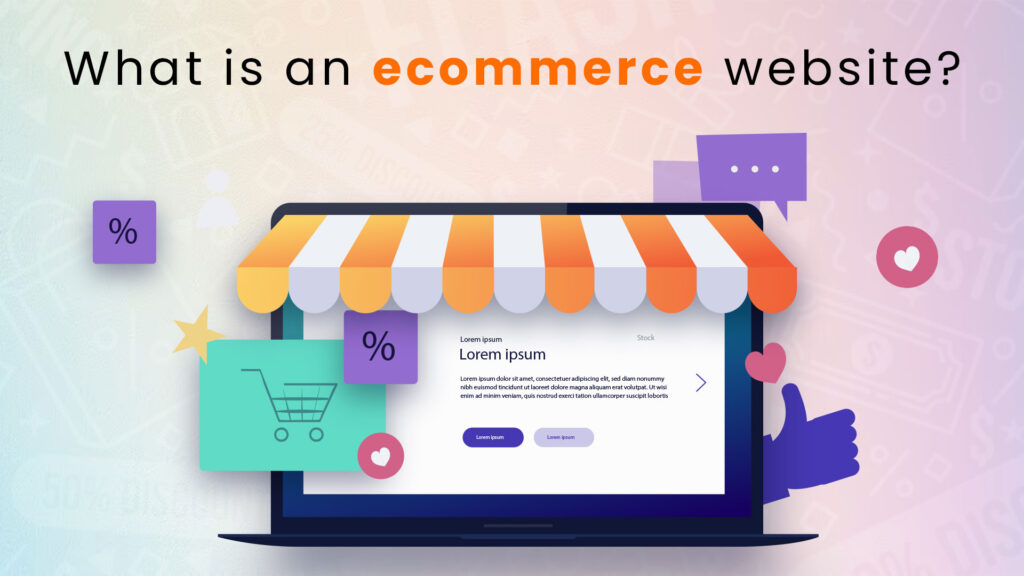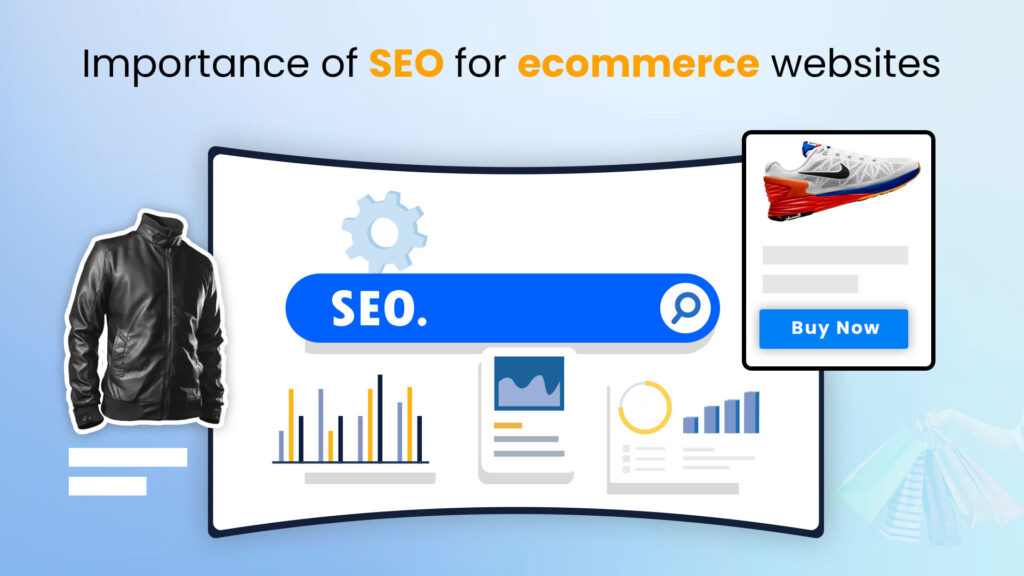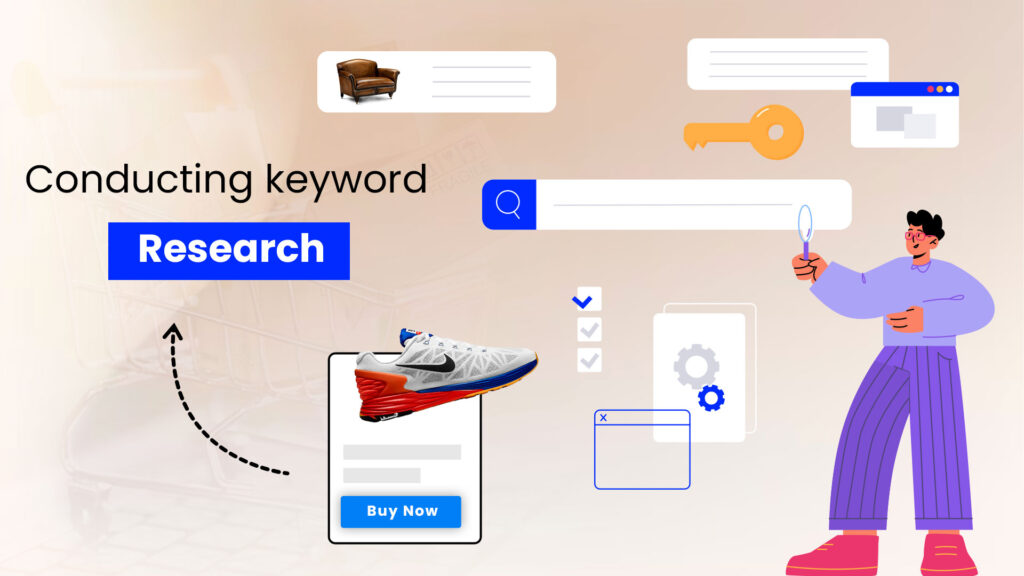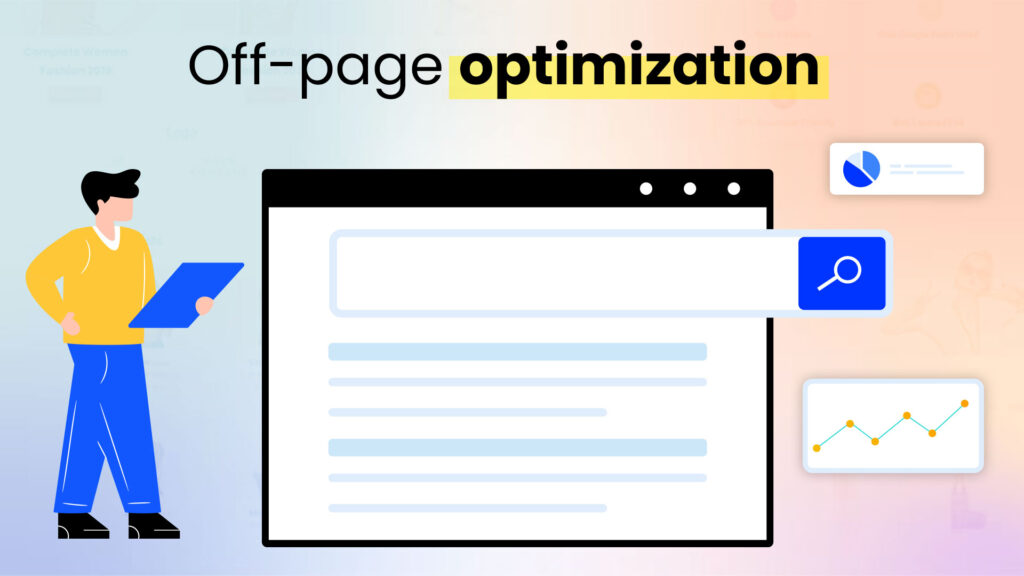In today’s digital age, having a well-developed ecommerce website can be the difference between the success and failure of a business. With the rise of online shopping, customers expect an easy and seamless shopping experience that they can access from anywhere, at any time. However, building a high-performing ecommerce website is easier said than done. It requires careful planning, expert knowledge, and a deep understanding of your target audience. In this article, we’ll provide you with tips for developing an ecommerce website that will skyrocket your sales and help your business thrive in the digital marketplace.
Importance of ecommerce website
The importance of developing an ecommerce website cannot be overstated in today’s digital age. With more and more consumers shopping online, having an ecommerce website is crucial for businesses to remain competitive and reach a wider audience.
An ecommerce website allows businesses to sell products and services to customers across the globe, 24/7, without the limitations of a physical storefront. This provides businesses with a greater reach and allows them to target customers in different geographic locations.
Moreover, an ecommerce website provides customers with the convenience of shopping from the comfort of their homes, without the need to physically visit a store. This can save customers time and money, and also provide them with a wider selection of products to choose from.
Additionally, an ecommerce website allows businesses to collect valuable data on customer behavior and preferences. This data can be used to personalize the shopping experience for customers and tailor marketing efforts to their needs and interests.
Overall, an ecommerce website is a powerful tool for businesses to grow their sales, expand their reach, and better serve their customers.
Understanding the Basics of Ecommerce Website Development
What is an ecommerce website?

An ecommerce website is a type of website that allows businesses to sell products and services online to customers. Unlike a traditional brick-and-mortar store, an ecommerce website enables customers to purchase products and services from the comfort of their homes or mobile devices.
Ecommerce websites typically feature a product catalog, where customers can browse products by category, brand, or price range. The website also includes a shopping cart, which allows customers to select and purchase products, and a secure payment gateway, which enables customers to make payments online using credit cards, debit cards, or other payment methods.
Ecommerce websites can vary in size and complexity, from small online stores with just a few products, to large marketplaces with millions of products from multiple sellers. The success of an ecommerce website depends on various factors, including the quality of the products, the website’s design and functionality, and the effectiveness of marketing and advertising efforts.
Types of ecommerce websites

Below are some of the most common types of ecommerce websites, each with its unique features and business model.
- Business-to-Consumer (B2C) Ecommerce: This type of ecommerce website sells products and services directly to consumers. B2C ecommerce websites typically offer a wide range of products, including clothing, electronics, and household goods.
- Business-to-Business (B2B) Ecommerce: This type of ecommerce website sells products and services to other businesses. B2B ecommerce websites typically offer products in bulk and at discounted prices.
- Consumer-to-Consumer (C2C) Ecommerce: This type of ecommerce website facilitates transactions between individual consumers. C2C ecommerce websites typically act as a platform where individuals can buy and sell products or services to each other.
- Consumer-to-Business (C2B) Ecommerce: C2B ecommerce websites enable individual consumers to offer their products or services to businesses. This type of ecommerce is commonly utilized by independent contractors or freelancers who are looking to sell their services to businesses.
- Mobile Commerce (M-commerce): This type of ecommerce website is optimized for mobile devices, such as smartphones and tablets. M-commerce websites typically offer a streamlined and user-friendly mobile shopping experience.
- Social Commerce: This type of ecommerce website integrates with social media platforms, such as Facebook and Instagram, to allow businesses to sell products directly to their followers.
The type of ecommerce website a business chooses to develop depends on its target audience, products or services, and overall business goals.
Explore More: For Creating Ecommerce Website
Essential features for Developing an Ecommerce Website
Shopping cart
A shopping cart is a common software feature on ecommerce websites that enables customers to choose and add products to a virtual cart or basket to purchase later. The shopping cart serves as a virtual store, where customers can review their selected items, adjust quantities, and proceed to the checkout process.
The shopping cart typically displays the product image, name, price, and quantity of items selected. Customers can also easily remove items from their cart or add more products as needed. Once the customer has finalized their selections, they proceed to the checkout process, where they can provide payment and shipping information to complete the purchase.
In addition to facilitating the purchase process, shopping carts often include additional features such as the ability to save items for later purchase, the option to apply coupon codes or discounts, and the ability to calculate taxes and shipping costs. Overall, the shopping cart is a critical component of the ecommerce experience, as it enables customers to easily browse, select, and purchase products online.
Product catalog
A product catalog is a comprehensive list of all the products offered by a business, typically presented in a printed or digital format. It contains detailed information about each product, including its name, description, price, and images. A product catalog is an essential tool for businesses, as it helps customers make informed purchasing decisions and allows businesses to showcase their products in an organized and professional manner.
Product catalogs can take many forms, including physical printed catalogs, digital catalogs, and online product listings. In the digital age, an increasing number of businesses are choosing to have online product catalogs that customers can access from anywhere, at any time. This makes it easier for customers to browse and shop for products.
Overall, a well-designed product catalog is an essential tool for any business that wants to showcase its products and increase sales. Whether in print or digital format, a product catalog provides customers with the information they need to make informed purchasing decisions and helps businesses to present their products in the best possible light.
Payment gateway
A payment gateway is an online service that processes and authorizes electronic payments for e-commerce websites. It acts as an intermediary between the buyer and the seller, facilitating the secure transfer of funds from the buyer’s bank account or credit card to the seller’s account.
When a customer makes a purchase on an e-commerce website, the payment gateway securely collects the customer’s payment information, such as credit card details or bank account information, and transmits it to the appropriate financial institution for authorization. The payment gateway also ensures that the transaction is secure by encrypting the customer’s data during transmission and validating the transaction against fraud detection protocols.
Once the payment gateway transfers the funds to the seller’s account within a few business days, typically depending on the payment gateway’s processing time, after authorizing the payment. The payment gateway may also provide the seller with additional features such as recurring billing, automatic refunds, and fraud detection services.
Overall, payment gateways provide a convenient and secure way for e-commerce websites to accept electronic payments and manage their transactions.
SSL certificate
An SSL (Secure Sockets Layer) certificate authenticates the identity of a website and encrypts sensitive data transmitted between the website and its users. It is a digital certificate.
When a user visits a website with an SSL certificate, the browser and the server establish a secure connection. This means that all data exchanged between the two is encrypted, making it difficult for hackers to intercept or steal.
An SSL certificate can be identified by the padlock icon in the browser’s address bar and the “https” protocol in the website’s URL. This indicates that the website has a secure connection and is safe to use.
Overall, an SSL certificate is an essential tool for any website that collects or transmits sensitive information, such as credit card numbers, passwords, or personal data. It provides peace of mind for both website owners and users, and helps to build trust and credibility online.
Developing an Ecommerce Website That Stands Out
Choosing a suitable ecommerce platform
When developing an ecommerce website, choosing the right platform is crucial for the success of your business. The platform you choose will have a significant impact on the functionality and overall performance of your website. Here are some factors to consider when choosing a suitable ecommerce platform:
Ease of Use: The platform you choose should be easy to use and user-friendly, allowing you to easily manage your online store without requiring extensive technical knowledge.
Cost: Consider the costs involved in using the platform, such as monthly fees, transaction fees, and additional charges for add-ons and plugins.
Customization: Look for a platform that allows for customization of your ecommerce website to meet your specific business needs.
Features and Functionality: The platform should offer a range of features and functionality that align with your business requirements, such as the ability to integrate with third-party software or add-ons.
Security: Security is critical for ecommerce websites, so ensure the platform you choose has strong security features to protect customer data.
Scalability: Your ecommerce website may grow over time, so choose a platform that can scale with your business needs, accommodating an increase in traffic and sales.
Some popular ecommerce platforms include Wcart, Webnexs, Shopify, WooCommerce and Magento. Each of these platforms has its own set of features and benefits, so it is essential to research and compare them before making a decision. Ultimately, the platform you choose should align with your business needs and goals, ensuring the success of your ecommerce website.
Read More: For Choosing Top Ecommerce Platform
Customizing your website design
Customizing your website design involves making changes to the appearance, layout, and functionality of your website to meet your specific needs and preferences. This allows you to create a unique website that stands out from the competition and reflects your brand’s personality.
When customizing your website design, you can choose from a range of options, including:
Choosing a theme or template: Most website platforms offer a range of themes or templates to choose from. These pre-designed layouts can be customized with your own content, colors, and fonts to create a unique look and feel.
Creating a custom design: If you have specific design requirements that cannot be met with a pre-designed template, you can hire a designer to create a custom design for your website.
Adjusting layout and navigation: You can adjust the layout and navigation of your website to make it easier for users to find the information they need. This might include rearranging the order of pages, creating drop-down menus, or adding a search bar.
Choosing colors and fonts: The colors and fonts you choose for your website can have a big impact on the overall look and feel. You can choose colors that match your brand’s color palette and fonts that are easy to read and reflect your brand’s personality.
Adding multimedia content: Adding images, videos, and other multimedia content can help bring your website to life and make it more engaging for users.
Overall, customizing your website design allows you to create a website that is tailored to your specific needs and preferences. It can help you stand out from the competition and make a great first impression on your visitors.
Creating quality content
Creating quality content means producing content that is relevant, valuable, and engaging to your target audience. Quality content helps you to attract and retain a loyal audience, increase brand awareness, and boost your search engine rankings.
Here are some key elements to consider when creating quality content:
Understand your audience: Identify your target audience and understand their needs, interests, and pain points. This will help you create content that resonates with them and provides value.
Conduct research: Conduct thorough research to ensure your content is accurate and up-to-date. This includes researching your topic, statistics, and industry trends.
Use a clear structure: Organize your content using a clear and logical structure. Use headings, subheadings, bullet points, and numbered lists to make it easy for readers to digest.
Write in a clear and concise style: Use simple language and avoid jargon. Be concise and get straight to the point. Use an active voice and vary your sentence length to keep readers engaged.
Use visual aids: Incorporate visuals such as images, videos, infographics, and charts to make your content more engaging and easier to understand.
By following these tips, you can create quality content that resonates with your audience, builds trust, and helps achieve your business goals.
Optimizing Your Ecommerce Website for Search Engines
Importance of SEO for ecommerce websites

SEO (Search Engine Optimization) is critical for the success of any ecommerce website. The goal of SEO is to increase the visibility and ranking of your website in search engine results pages (SERPs), which in turn drives more traffic and leads to higher sales.
Here are some specific reasons why SEO is important for ecommerce websites:
Increases website traffic: A higher ranking in SERPs means that your ecommerce website is more likely to be seen by potential customers. This leads to increased traffic, which in turn increases the chances of making sales.
Improves user experience: Good SEO practices ensure that your website is user-friendly and easy to navigate. This improves the user experience, which is important for keeping visitors on your site and encouraging them to make a purchase.
Builds trust and credibility: A high ranking in SERPs is an indication to customers that your ecommerce website is trustworthy and credible. This can lead to increased brand awareness and customer loyalty.
Boosts sales: More traffic to your ecommerce website leads to more opportunities for sales. By optimizing your website for SEO, you can increase the chances of converting visitors into customers.
Provides long-term benefits: Unlike paid advertising, which only provides short-term benefits, SEO provides long-term benefits. Once your ecommerce website is optimized for SEO, it will continue to drive traffic and sales for years to come.
In summary, SEO is essential for the success of any ecommerce website. By improving the visibility and ranking of your website in search engine results, you can increase traffic, improve the user experience, build trust and credibility, boost sales, and provide long-term benefits.
Conducting keyword research

Conducting keyword research is the process of identifying and analyzing the words and phrases that people use to search for information related to a particular topic. This research helps businesses to understand the language their target audience uses when looking for their products or services online. By identifying these keywords, businesses can then optimize their website content to appear in search engine results pages (SERPs) for those terms, increasing their visibility to potential customers.
Keyword research typically involves using keyword research tools to find popular search terms, and analyzing their relevance to the business’s products or services. Factors such as search volume, competition, and relevance to the business’s niche are taken into consideration when selecting keywords to target.
Once a list of relevant keywords has been identified, businesses can then optimize their website content around these keywords. This may involve incorporating them into page titles, meta descriptions, headings and subheadings, and body content. By doing so, businesses can increase the likelihood of their website appearing in SERPs when people search for those terms, ultimately driving more traffic and potential sales to their website.
On-page optimization

On-page optimization involves utilizing techniques to optimize individual website pages for improving their search engine ranking and increasing visibility in search results. These techniques involve optimizing various elements on the page itself, such as the content, HTML code, and images, to make them more search engine friendly and relevant to the user’s search query.
Some of the key factors that are considered during on-page optimization include the use of relevant keywords in the page’s content, headings, and meta tags; the proper use of title tags and meta descriptions; the optimization of images with alt tags and descriptive file names; the use of internal linking to improve site navigation and user experience; and the optimization of page loading speed.
Effective on-page optimization requires a deep understanding of how search engines rank pages and the specific factors they consider when determining relevance and ranking. By implementing these techniques, website owners and developers can improve their website’s visibility in search results, drive more organic traffic to their site, and ultimately increase conversions and revenue.
Off-page optimization

Off-page optimization refers to the actions taken outside of your website to improve its search engine rankings and online visibility. This includes techniques and strategies to increase the quantity and quality of inbound links pointing to your website from other authoritative and relevant websites, as well as tactics to increase your website’s visibility and popularity across social media platforms and other online channels.
Off-page optimization is an important aspect of search engine optimization (SEO) because search engines like Google take into account the reputation and popularity of a website when determining its search engine rankings. The more high-quality inbound links your website has, the more likely it is to be seen as a trusted and authoritative source of information in your industry or niche.
Conclusion
In conclusion, developing an ecommerce website is a crucial step for businesses looking to sell their products or services online. By following best practices for website design, user experience, security, and marketing, businesses can create a professional and effective ecommerce website that will attract and convert customers. It is important to continuously monitor and optimize the website to ensure its functionality, relevance, and success in a competitive online marketplace. Good Luck!
Frequently Asked Questions(FAQs)
What are the essential features that an e-commerce website should have?
An e-commerce website should have a user-friendly interface, a secure payment gateway, a product catalog with clear and detailed descriptions, a shopping cart, and an order tracking system. Additionally, it should have a search bar, customer reviews and ratings, and social media integration to increase the reach of the website.
How can I optimize my e-commerce website for search engines?
To optimize an e-commerce website for search engines, you should conduct keyword research and use relevant keywords in your website content, product descriptions, and meta tags. You should also optimize your website structure, use internal linking, and ensure that your website is mobile-friendly.
What are the best ways to market my e-commerce website?
There are several ways to market an e-commerce website, such as social media advertising, email marketing, content marketing, and influencer marketing. You can also use pay-per-click advertising, search engine optimization, and affiliate marketing.
How can I ensure the security of my e-commerce website?
To ensure the security of your e-commerce website, you should use SSL encryption to protect sensitive customer information such as credit card details. You should also implement two-factor authentication and ensure that your website is PCI DSS compliant.
How can I improve the user experience of my e-commerce website?
To improve the user experience of your e-commerce website, you should focus on website speed and performance, use clear and concise language, and provide high-quality product images and videos.




Leave a Reply